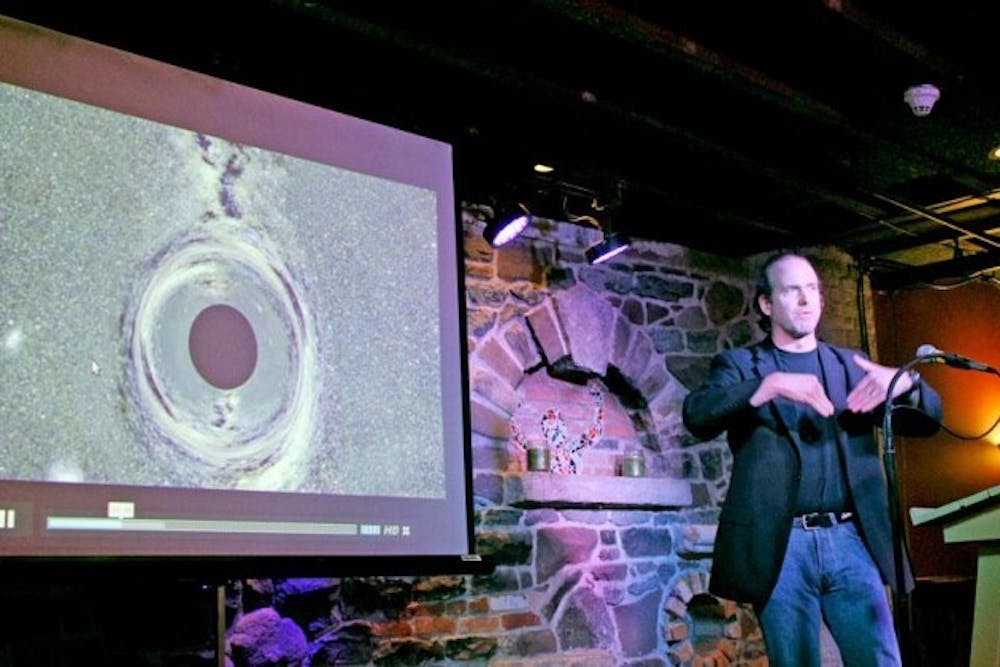The process of being sucked into a black hole is a subject that has racked the minds of scientists and artists alike. At Asbury Hall at Babeville, the two disciplines came together to show their vision of the cosmic occurrence.
On Tuesday night, Hallwalls, Buffalo Museum of Science, and the UB College of Arts & Sciences hosted Science & Art Cabaret No. 7.0: Everything Is (Not Necessarily) Relative. The exhibit featured a theoretical simulation of a black hole's consummation of a galaxy.
Will Kinney, associate professor of physics, Matthew Steilen, associate professor of constitutional law, and Timothy Scaffidi, graduate assistant at the CFA, hosted the free demonstration. They satisfied the audience with perplexing scientific and artistic lectures on the unfathomable particularities of the universe.
The lectures resembled a more sophisticated version of CBS' The Big Bang Theory, and the combination of art and science in these diatribes was both educational and beautiful for the audience to witness.
"Science and art are far more intimately linked than you would ever think on the surface, but there are these imaginative, speculative, beautiful spheres of inquiry," said John Massier, Hallwalls' visual arts curator. "It's kind of a wonderful alchemical process because we don't know how it's going to wind up until it plays out."
Kinney used a projected simulation made by University of Colorado professor of astrophysics Andrew Hamilton to begin his quantitative, scientific explanation of the experience of being sucked into a black hole. The audience was enthused by the professor's explanations.
"When you are falling into a black hole the thing that will kill you is the tidal force," Kinney said. "Because your feet are being pulled in faster than your head you will technically be spaghettified."
As his lecture continued he was very particular about the pertinence of Hamilton's simulation.
"These are not artist's conceptions," Kinney said. "These are very quantitative calculations based on the equations of general relativity that he's using."
Professor Steilen continued the peculiar lecture by discussing the concept of relativity using the Hermann grid illusion – an optical illusion that plays with the vision of the viewer. The main point of his lecture was that the truth depends on context and the things that we rationalize as human beings may not be as real as we imagine them to be.
"Just like this grid is context-dependent, so are the other visual experiences that we have," Steilen said. "We are all committed to an error theory – the towel isn't blue, our experience with the towel is blue."
Scaffidi led one of the more visually didactic parts of the evening. He showed his artistic interpretation of the gravitational performance of particles after the "big bang" through computer-generated images.
His interpretations were especially impressive since he's not a scientist.
"I often think about how I can use these notions of gravity, time, light, or even chaos, as tools to produce interesting, thought provoking experiences," Scaffidi said. "I'm not a scientist, but sometimes I wish I were or think I should have been – so my investigations into these concepts are mainly aesthetic, poetic, or philosophical."
The audience was truly captivated by every part of the evening. Everyone seemed to transcend the dungeon-like venue as their minds waited for them to regain their instinctual patterns.
Email: arts@ubspectrum.com





